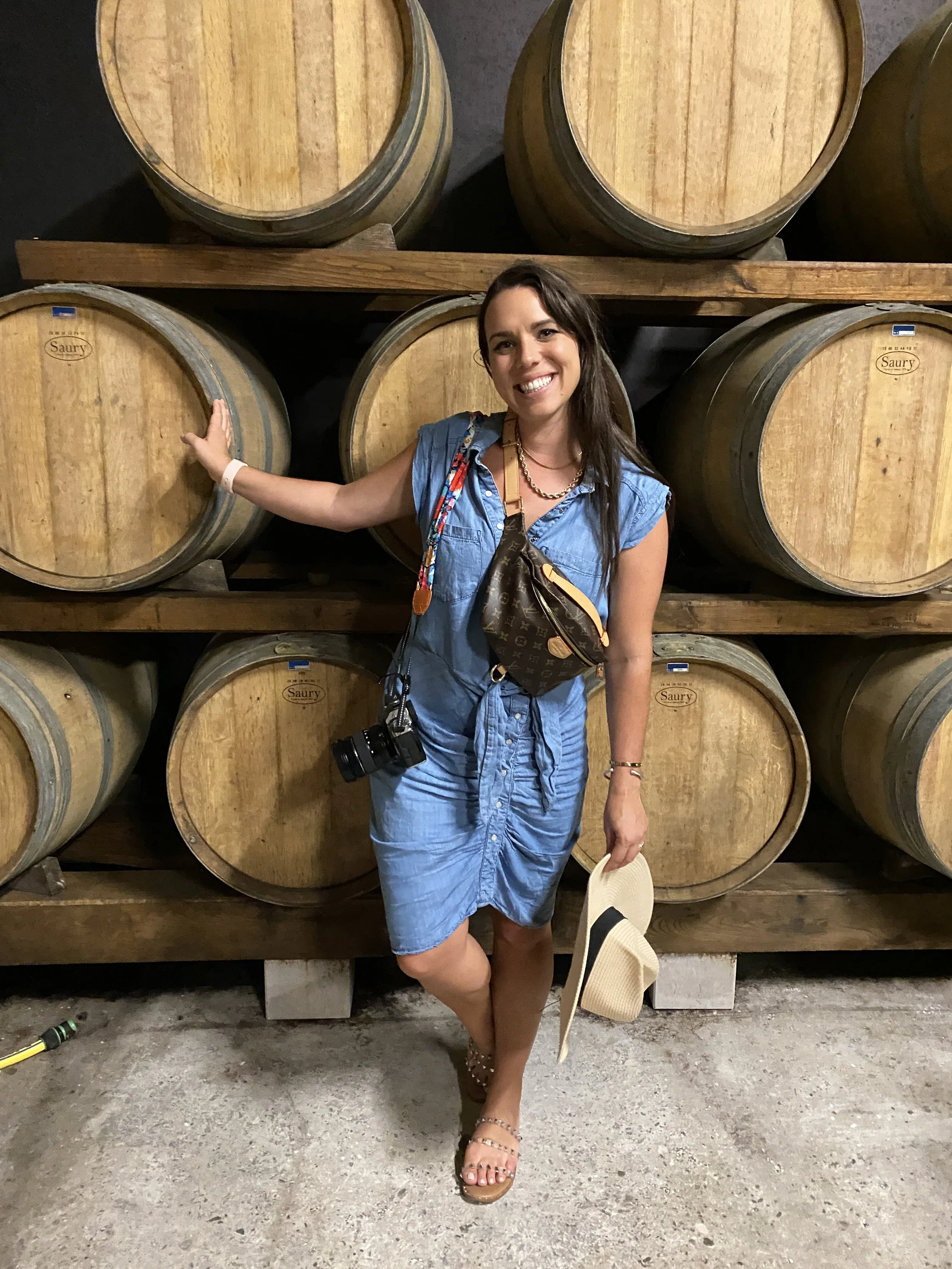Everything you need to know about oak & wine
How does oak impact wine? Why are certain types of oak used in winemaking? Do all wines see oak during the winemaking and aging process? I get asked these questions and ones similar to them pretty often and they’re all good questions! In episode #108 of The Wine CEO Podcast, I give an in depth look into oak and wine production. Click below to listen to the full episode or continue reading for everything you need to know!
First off, coopers, or craftsmen who make large wooden barrels, have been around for centuries. Even before the Middle Ages large wooden barrels were used to hold both liquids and solid items like fish, vegetables, gunpowder, oil, sugars, and more. Not only were these barrels perfect for storing, but since they were easy to roll, they were easy to transport too.
Fast forward a few hundred years and we get to how oak barrels are used in the present day. Many winemakers actually use large stainless steel fermentation tanks instead of dozens of hand-crafted wooden fermentation tanks. Not only are these less expensive, but they are also easier to clean and maintain over years and years of winemaking. So why would a winemaker want to use oak barrels? The main reason is flavor! The two most popular types of oak barrels are American oak barrels and French oak barrels. A lot of oak barrels are available in the US because of the bourbon industry. One of the requirements for whiskey to be called bourbon is that it has to be aged in new, charred white oak. There are over 2 million new oak barrels used every year in the US for bourbon production. Only about 100,000 of these stay in the U.S., while the rest are shipped to other countries for use. But these American oak barrels tend to give off very unique flavors of dill, baking spices, coconut, tobacco, vanilla, and sometimes eucalyptus.
Even more well-known than American oak in the wine industry is French oak. The demand for French oak barrels is high, but the supply is low. It’s believed that the best trees must be at least 100 years old, but preferably closer to 150 or 160 to have the straightest grain. In addition to smaller forests, French oak is typically hand-cut and needs more time drying than American oak. Plus cooperages in France tend to be a bit more traditional and smaller than the highly mechanized counterparts in the US, so the barrels again are just typically more expensive. These oak barrels are still highly sought after since French oak will typically impart flavors of caramel, cream, toast, baking spices, and vanilla that are typically more subtle than the American oak flavors.
Now, oak barrels will lose their flavor as they age and are used repeatedly for holding new vintages of wine. If you ever hear a winemaker say “we only use new oak barrels” or “ we only use old oak barrels” it’s because of their preference for how much flavor they want the oak to impart onto their wine. Newer barrels will give off more flavor and older barrels less. Unfortunately, some wineries use imitation tricks to save money like adding staves or wood chips to a stainless steel tank. This is done in an attempt to mimic the flavor of aging in an oak barrel. If a wine fact sheet or label uses the terms “oak maturation” or “oak influence” instead of barrel aging, these can sometimes be hints that the wine did not see a true oak barrel. Sadly these wines do not typically have the complexity of a wine that is matured or aged in a true oak barrel and these wines don’t tend to age as well either.
I hope that gives you an intro to how oak barrels can affect the flavor of wine, but there is so much more to learn! If you want to learn more, listen to The Wine CEO Podcast Episode 108 where I go into a lot more detail about this topic. Also, if you’re looking to dive into some reading about this topic, then I recommend Jancis Robinsons’s book The Oxford Companion to Wine. She has some really thorough explanations from experts across the industry, and I referenced her book a lot when I was researching for the episode.
Cheers!

